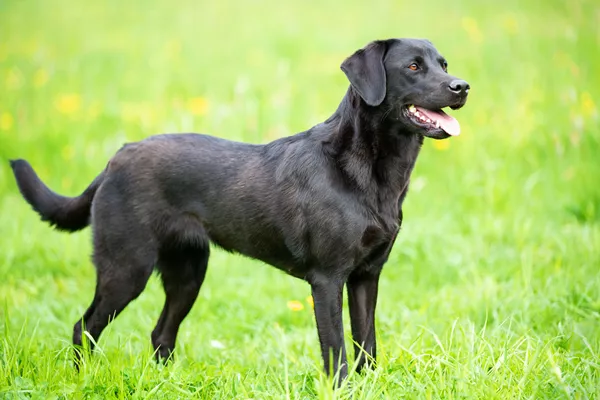
Although, Labrador Retrievers are easy going, they need exercise every day. They enjoy walks, swimming, and retrieving.
Labs have a short, water-repellant double coat that sheds heavily. Weekly grooming can help keep the shedding under control and they should be bathed two to three times a month to keep their coat clean.
Labs thrive in active households that can provide them with plenty of exercise, mental stimulation, and attention. They are also highly social, loyal, and outgoing so they do best in families with children and other pets.
These 'gentle giants' also make excellent assistance dogs due to their sensitive and affectionate nature.
Although the name might suggest Labrador Retrievers came from Labrador, Canada, this well-known dog breed originated from nearby Newfoundland in the 1500s. At the time, small water dogs were bred with larger Newfoundlands to create a breed called the St. John’s Water Dog or Lesser Newfoundland.
These dogs were raised by fishermen to help retrieve fish and nets from the icy waters of the North Atlantic. The new breed was perfect for jobs like these because their thick coats repelled water and their webbed paws made them excellent swimmers.
Labrador Retrievers continued to live exclusively in Newfoundland until the early 1800s when they eventually made their way to Poole, England. The Earl of Malmesbury, a British nobleman and sports enthusiast, had seen the breed in action and immediately brought them home to England.
In 1830, a British Sportsman named Colonel Hawker described the dogs as “the best for any kind of shooting… generally black and no bigger than a Pointer, very fine in legs, with short smooth hair… is extremely quick running, swimming and fighting.”
Both the Earl and Duke of Malmesbury relied on Labrador Retrievers for their shooting sports and began to call them their “Labrador Dogs.” The name stuck and the Earl’s son eventually began to breed the dogs. By 1903, Labradors were officially recognized by the English Kennel Club.
In the early 1900s, hunters and farmers from the United States caught wind of the Lab’s noteworthy work ethic and began incorporating them into their daily lives. By 1917, the American Kennel Club recognized Labrador Retrievers as an official breed and they quickly became a loving pet to families across the country.
Come see what’s new. View All Posts